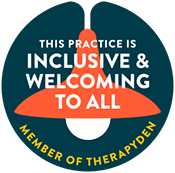Understanding Coercive Control: Recognizing the Subtle Signs

By Brenda Stephens, LPCC
Coercive control is a form of psychological manipulation often hidden in plain sight. It can affect anyone and is more common than many realize. Recognizing its subtle signs can empower individuals to seek help and understand their experiences. This blog will explore what coercive control really is, how it manifests in relationships, and the steps one can take toward recognizing and addressing it.
What is Coercive Control?
Coercive control is often described as a pattern of controlling behaviors designed to assert power over another person. Unlike physical abuse, which can leave visible marks, coercive control operates in more subtle, insidious ways. This form of manipulation can include a range of tactics, such as emotional abuse, isolation, and even financial control. Individuals may feel trapped and powerless as they navigate the complexities of their relationship.
Understanding what coercive control entails is essential. It encompasses not just the overt acts of violence but also the quieter, more psychologically damaging behaviors that can permeate daily life. For instance, a partner may routinely belittle their significant other, constantly questioning their judgment or decisions. Over time, this can erode self-esteem and create a sense of dependency, which makes it difficult for the victim to leave the relationship.
It’s important to differentiate coercive control from isolated incidents of conflict or disagreement in relationships. While arguments and misunderstandings are a normal part of any partnership, coercive control is characterized by a continuous, deliberate pattern of behaviors aimed at asserting control. By recognizing these patterns early, individuals can better protect themselves and begin to take steps toward reclaiming their autonomy.
Recognizing the Subtle Signs of Coercive Control
Recognizing coercive control begins with awareness of the signs. Often, the behaviors can be so subtle that they go unnoticed for a long time. Have you ever felt like your partner is always monitoring your texts or questioning your whereabouts? While it may seem like they ‘care’, it could be indicative of controlling behavior at play. Such surveillance can slowly build an environment of distrust and anxiety.
Another subtle sign might be the constant need to seek permission for small decisions. Perhaps your partner insists on knowing your plans in advance, or you find yourself altering your schedule to accommodate their preferences. This pattern of behavior often speaks volumes. The gradual erosion of personal freedom can lead to a state of compliance, where individuals feel they must adhere to their partner’s whims to maintain peace.
Furthermore, emotional manipulation can often accompany coercive control. If your partner frequently uses guilt or plays the victim when confronted about their controlling behaviors, this can leave you feeling responsible for their emotions. This tactic not only positions them as the ‘suffering’ party but ultimately places you in a role where you are forced to prioritize their needs over your own, further entrenching the cycle of control.
Recognizing these signs is pivotal in understanding your relationship dynamics. It’s crucial to take a step back and evaluate how consistently they arise. If you feel unease, confusion, or an overall sense of obligation in your relationship, you may be experiencing coercive control. Gathering the courage to address these feelings can lead to greater clarity and help you decide the direction that’s best for you.
The Impact of Coercive Control on Mental Health
The effects of coercive control on mental health can be devastating. The constant manipulation and undermining of one’s self-worth can lead to anxiety, depression, and a host of other psychological issues. Victims often find themselves increasingly isolated, feeling they have no one to turn to for support. This isolation is a key tactic used by the controlling partner to maintain dominance, making it challenging for individuals to reach out for help or even recognize their situation.
Moreover, the cumulative effect of living under coercive control can lead to a diminished sense of self. Many victims describe feelings of confusion and uncertainty over their own thoughts and feelings, a phenomenon often referred to as ‘gaslighting.’ Over time, this persistent questioning of reality can create a profound identity crisis, as individuals may begin to doubt their perceptions and decision-making abilities.
It’s essential to understand that escaping the clutches of coercive control is not simply a matter of leaving the situation. Even once the relationship ends, the psychological scars can linger. Many individuals require therapy and support groups to heal properly. Compassionate guidance from mental health professionals can aid in reclaiming one’s identity and rebuilding a sense of self-worth that has been undermined.
Common Tactics Used in Coercive Control
Coercive control is often carried out through various tactics that can be hard to distinguish from typical relationship dynamics. One prevalent tactic is *isolation*—where the controlling partner discourages or outright forbids contact with friends and family. This separation can make the victim more dependent on their abuser, as they become increasingly cut off from potential sources of support and validation.
Another common method is financial control. This might manifest as restricting access to shared finances or sabotaging a partner’s ability to work or pursue education. By controlling economic resources, the abuser also limits the victim’s independence, creating a financial dependency that further locks them into the controlling dynamic.
Furthermore, emotional manipulation can play a significant role in coercive control. This can include tactics such as blame-shifting, where the abuser projects their shortcomings onto the victim, resulting in a feeling of constant guilt. The partner may also monopolize conversations, turning any topic back to themselves, which can skew the victim’s sense of normalcy by crafting an environment where their needs are always sidelined.
Lastly, intimidation through threats—whether they’re subtle or blatant—constitutes a significant part of coercive control. This may not always take the form of overt aggression; it could be conveyed through tone, body language, or veiled threats regarding shared life elements such as children or homes. The underlying message is clear: non-compliance can lead to dire consequences.
Breaking Free: Steps to Recognize and Address Coercive Control
Breaking free from coercive control starts with a fundamental recognition of the situation. Acknowledging that your feelings are valid and that no one deserves to be controlled is the first critical step. This realization can foster a sense of empowerment, which is essential for moving forward. Journaling your experiences or speaking with trusted friends can help clarify your thoughts and lay the groundwork for understanding the full scope of your situation.
Once clarity is achieved, consider reaching out for professional help. Therapists specializing in abusive relationships can offer invaluable perspectives and tools for coping and recovery. They can assist in developing a safety plan that outlines the steps needed to remove yourself from a harmful situation gradually. This plan can include arranging secure living situations or identifying safe individuals to whom you can turn for support.
Additionally, establishing boundaries is crucial. Learning to say no and uphold your personal standards is a skill that strengthens over time. Start with smaller, manageable boundaries, and allow yourself grace as you navigate this process. A supportive network can also help reinforce your new standards, encouraging you every step of the way.
Ultimately, remember that healing takes time. The journey to confronting and overcoming coercive control is deeply personal and unique for each individual. Embrace every small victory in your recovery, as recognizing and breaking free from this cycle is a demonstration of courage and resilience.
Finding Support and Resources
Navigating the complexities of coercive control is difficult, and you don’t have to do it alone. Many organizations and hotlines are dedicated to supporting individuals in such situations. These resources can provide a safe space to discuss your experiences, validate your feelings, and offer practical advice on navigating the next steps. If you’re in immediate danger, it’s crucial to reach out to local authorities or trusted individuals who can assist you.
Support groups can also serve as a lifeline. Connecting with others who have experienced similar situations fosters a sense of community and understanding that can feel immensely validating. Sharing your story and hearing others can help you realize that you’re not alone, and it can provide insights into healing that you may not have considered.
In addition, online resources are incredibly valuable—many websites offer information on recognizing signs of coercive control, creating safety plans, and accessing professional help. Remember to consider your privacy when seeking information online, as your safety is paramount. Utilize incognito modes or private browsing features if you’re concerned about someone tracking your activities.
Ultimately, it’s about building a support network that feels right for you. Whether it’s friends, family, a support group, or professional counselors, having people who can affirm your experiences and help you feel less isolated is crucial. Recovery is a journey that takes time, and having the right resources and support can make all the difference.
Empowerment Through Awareness
By understanding the subtle signs of coercive control, individuals can become more aware of their relationships and empower themselves. It’s crucial to open up conversations about this form of abuse, as awareness can lead to help and healing. If you or someone you know may be experiencing coercive control, don’t hesitate to seek support.






